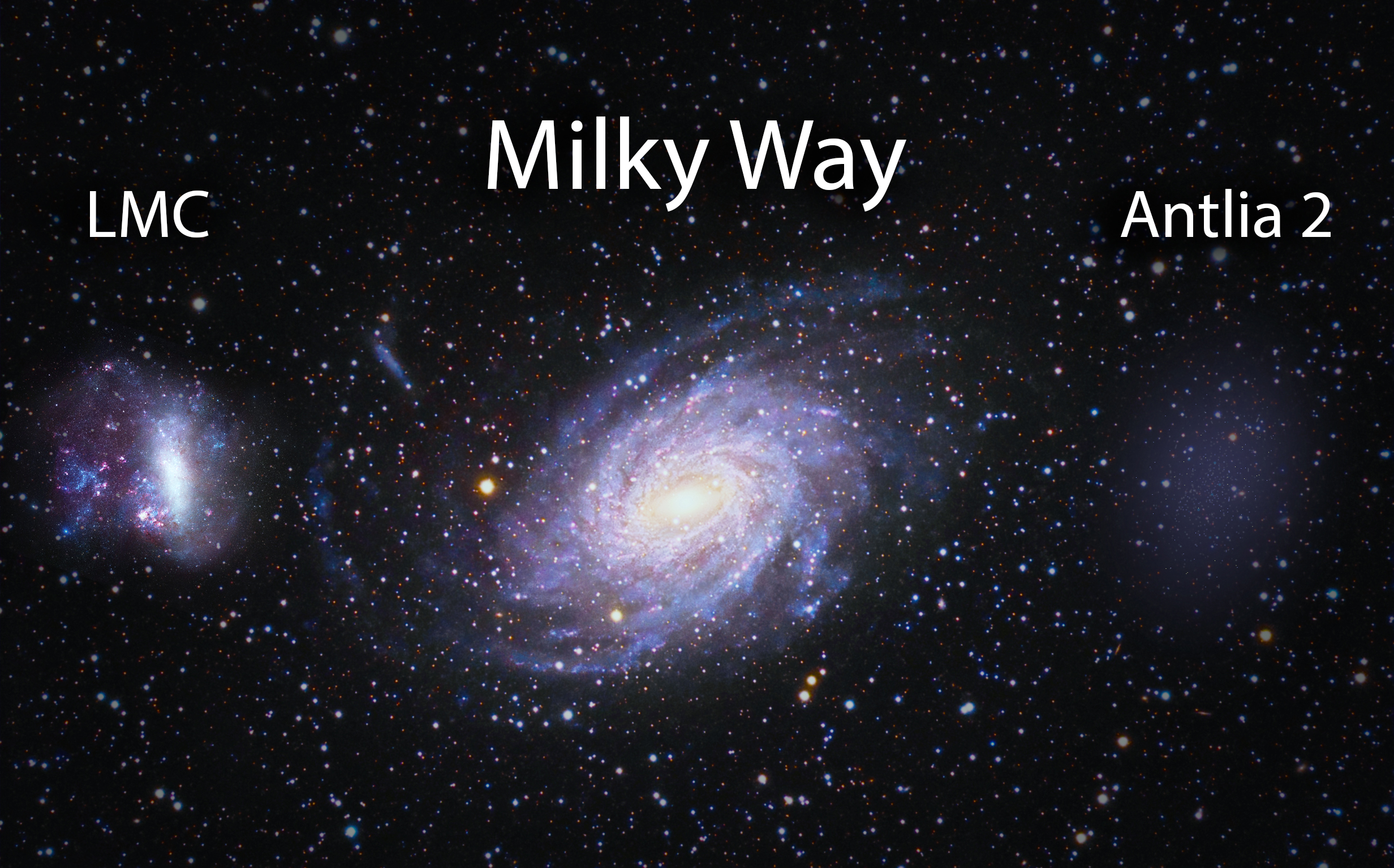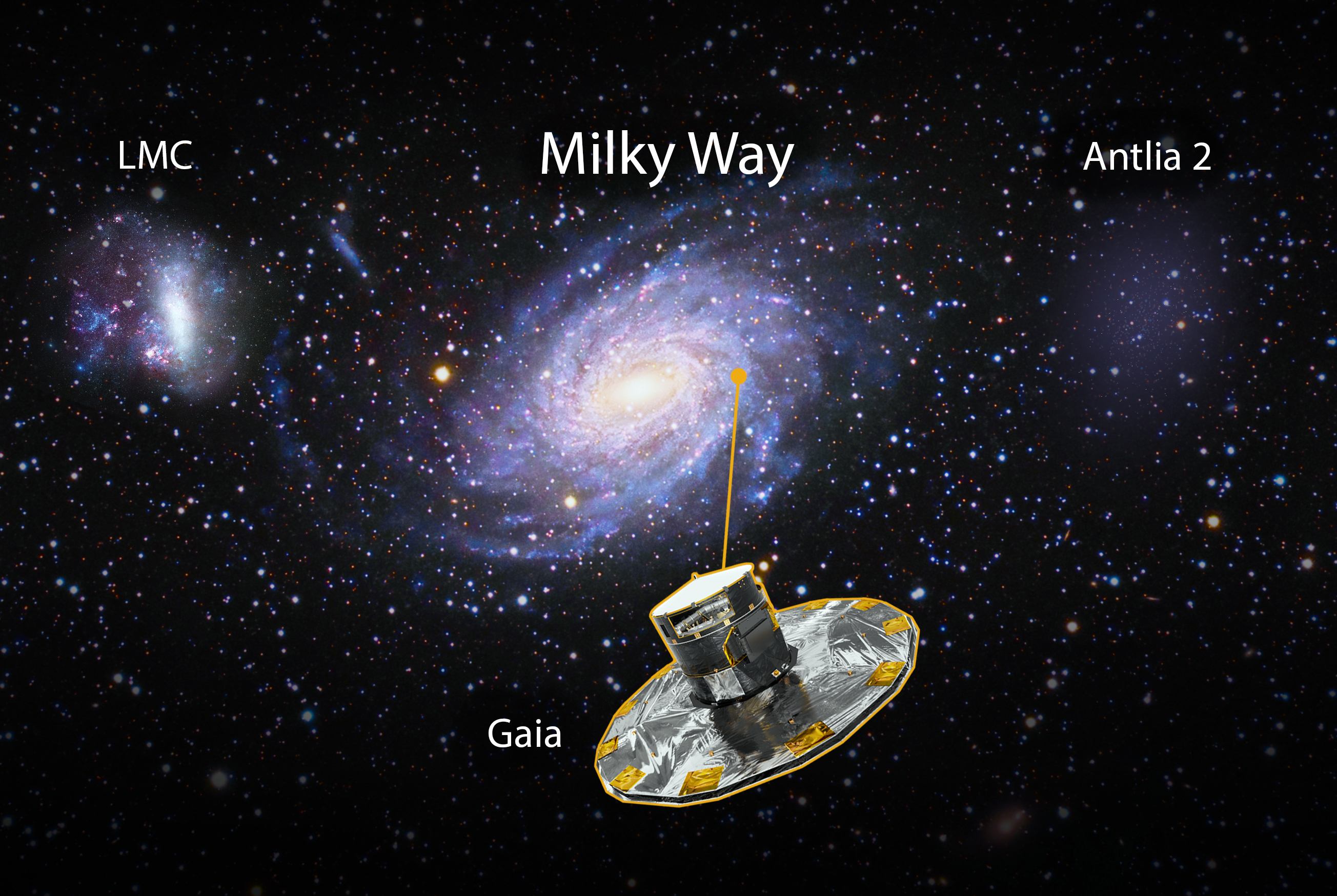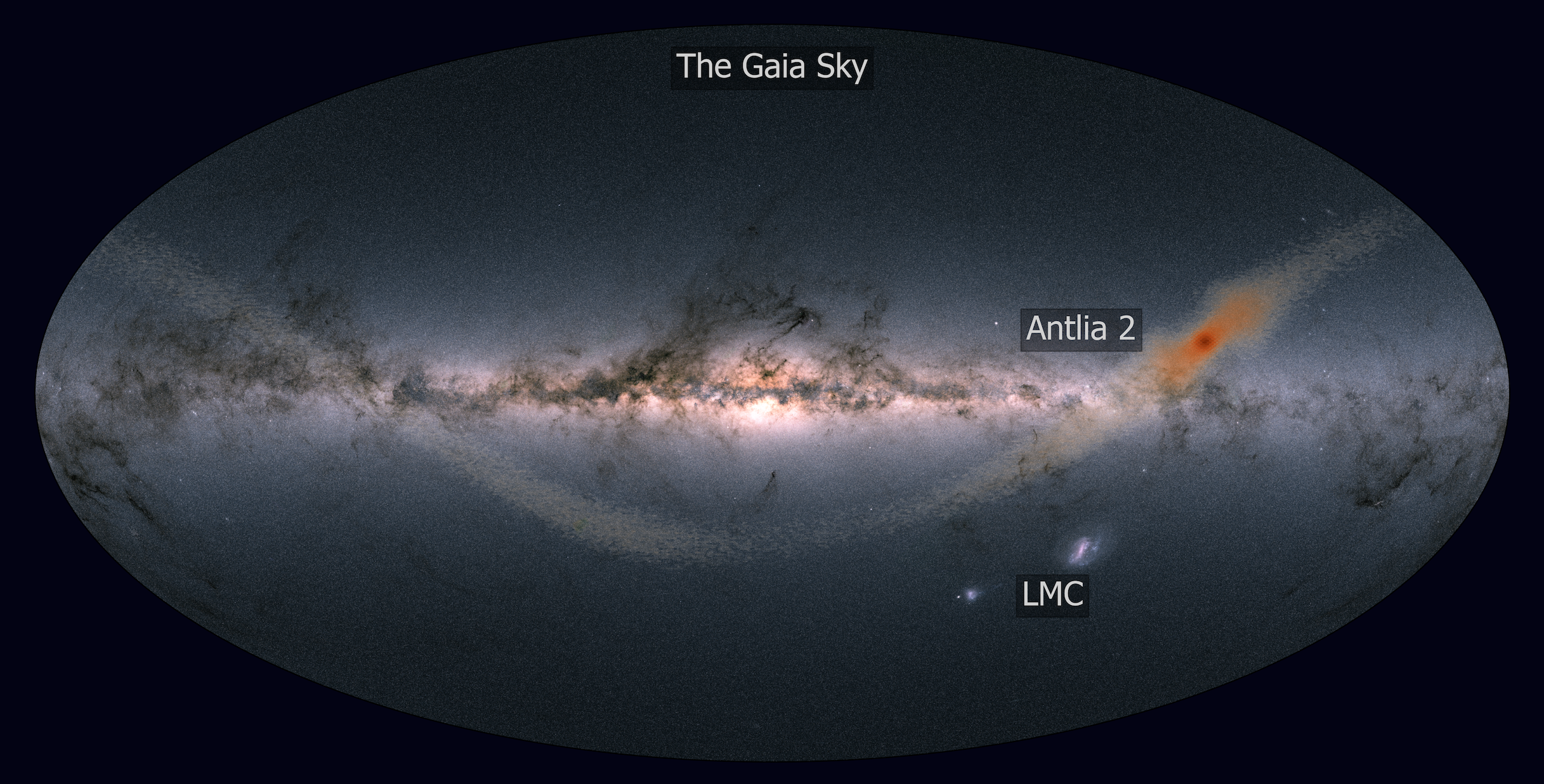The Antlia 2 dwarf
The most diffuse galaxy in the Universe
The Discovery Paper
The hidden giant: discovery of an enormous Galactic dwarf satellite in Gaia DR2 (Submitted to MNRAS)
|
Large Magellanic Cloud, Milky Way and Antlia 2

|
|
Credit: V. Belokurov (Cambridge, UK and CCA, New York, US) based on the images by Marcus and Gail Davies and Robert Gendler
|
|
Caption: Antlia 2 is slightly larger than the Large Magellanic
Cloud and is almost 1/3 of the Milky Way itself.
|
Large Magellanic Cloud, Milky Way, Antlia 2 and Gaia

|
|
Credit: V. Belokurov and A. Smith (Cambridge, UK and CCA, New York, US) based on the images by Marcus and Gail Davies and Robert Gendler
|
|
Caption: Antlia 2 is slightly larger than the Large Magellanic
Cloud and is almost 1/3 of the Milky Way itself.
|
Antlia 2, Milky Way and the Large Magellanic Cloud


|
|
Credit: G. Torrealba (Academia Sinica, Taiwan), V. Belokurov (Cambridge, UK and CCA, New York, US) based on the image by ESO/S. Brunier
|
|
Caption: What Antlia 2 would look like if you could see it, for example from Chile.
|
Antlia 2 and the Gaia Sky

|
|
Credit: J. Sanders (Cambridge, UK) based on the image by Gaia
Data Processing and Analysis Consortium (DPAC); A. Moitinho /
A. F. Silva / M. Barros / C. Barata, University of Lisbon, Portugal;
H. Savietto, Fork Research, Portugal.
|
|
Caption:Antlia 2 is a giant, but low mass, dwarf galaxy. As Antlia 2 orbits around the Milky Way, it is likely that stars are torn from the dwarf galaxy and deposited throughout the outskirts of the Milky Way. The orange stars show the results of a computer model of Antlia 2. The background shows the Gaia satellite’s view of the entire night sky. The Large Magellanic Cloud (LMC) is visible below the Milky Way disc — although similar to Antlia 2 in size, the LMC is 10,000 times brighter!
|




